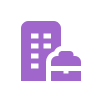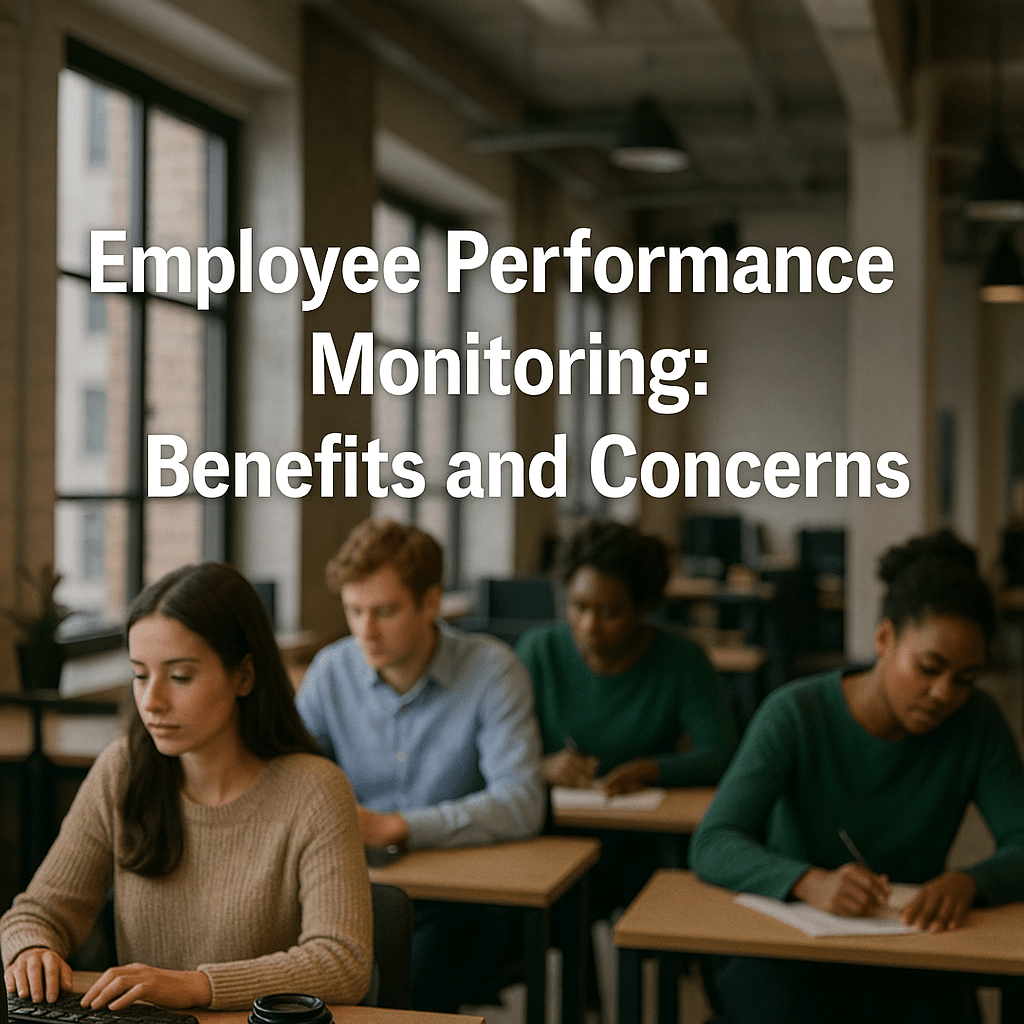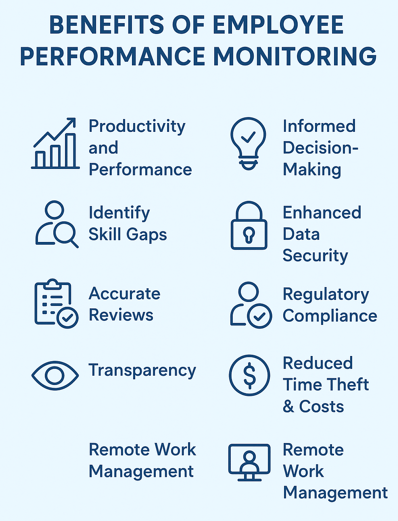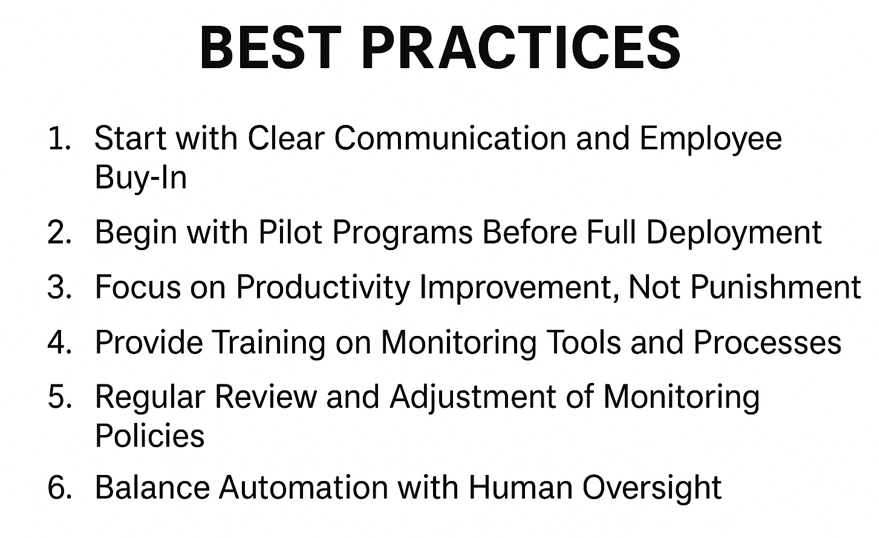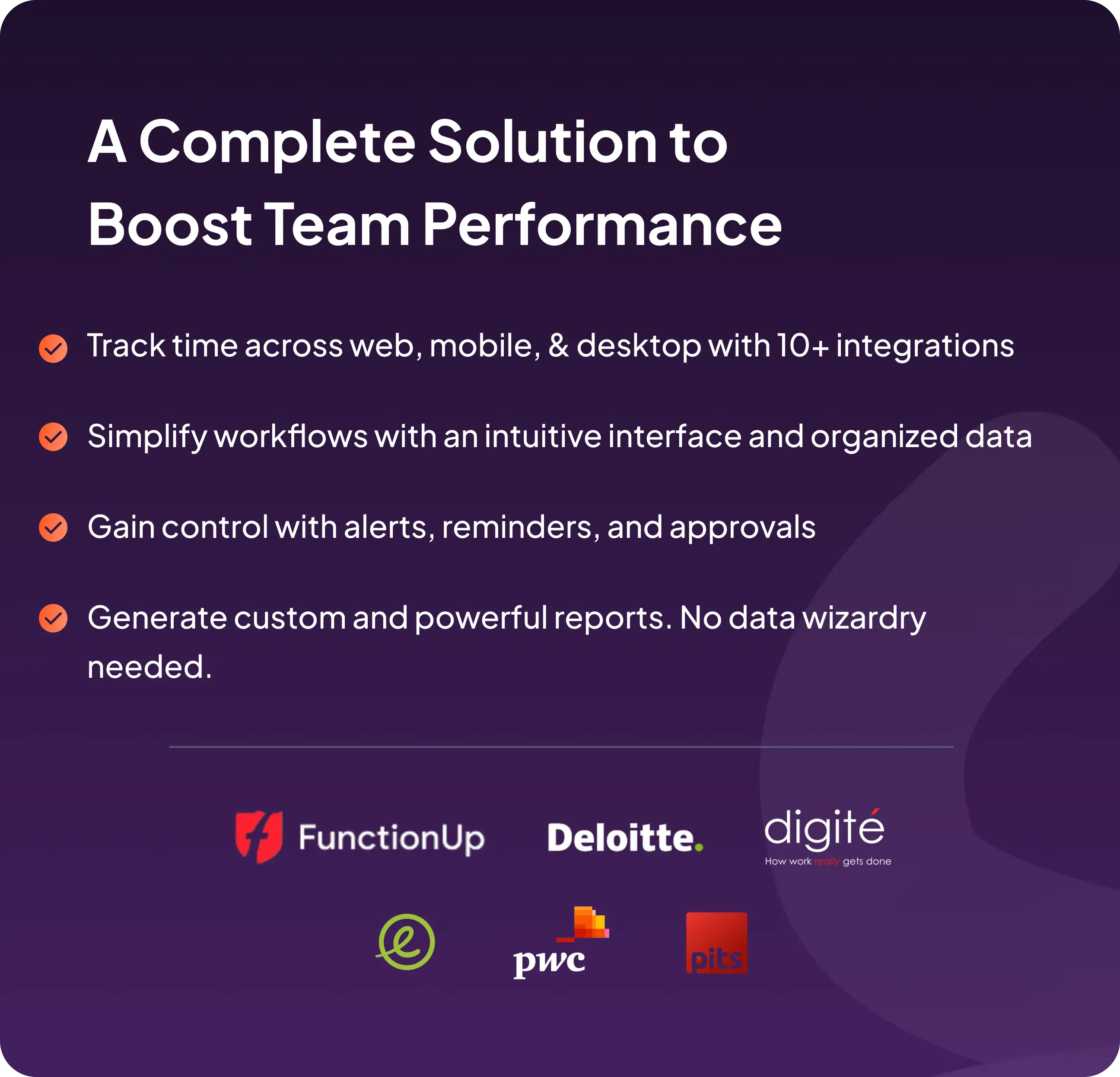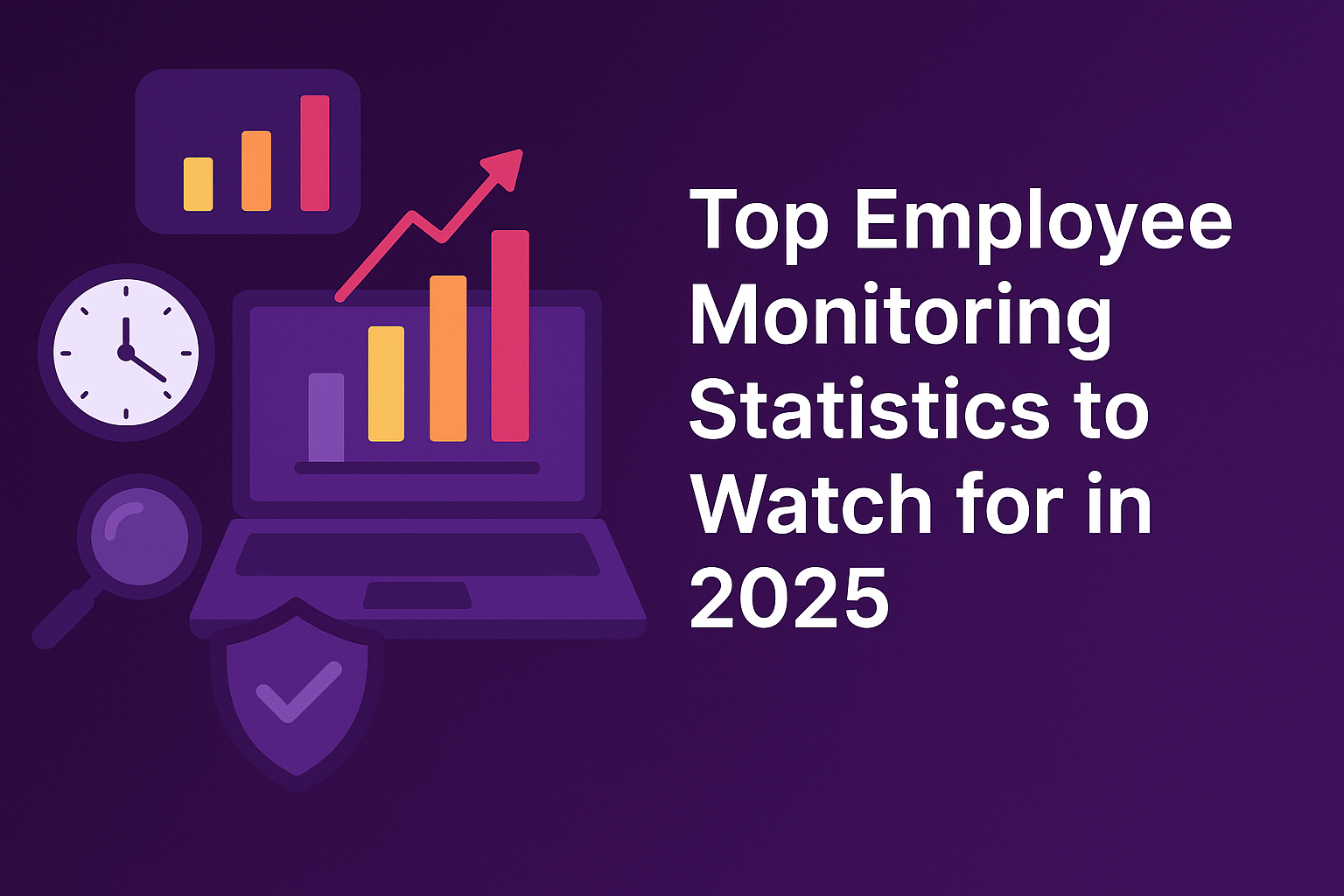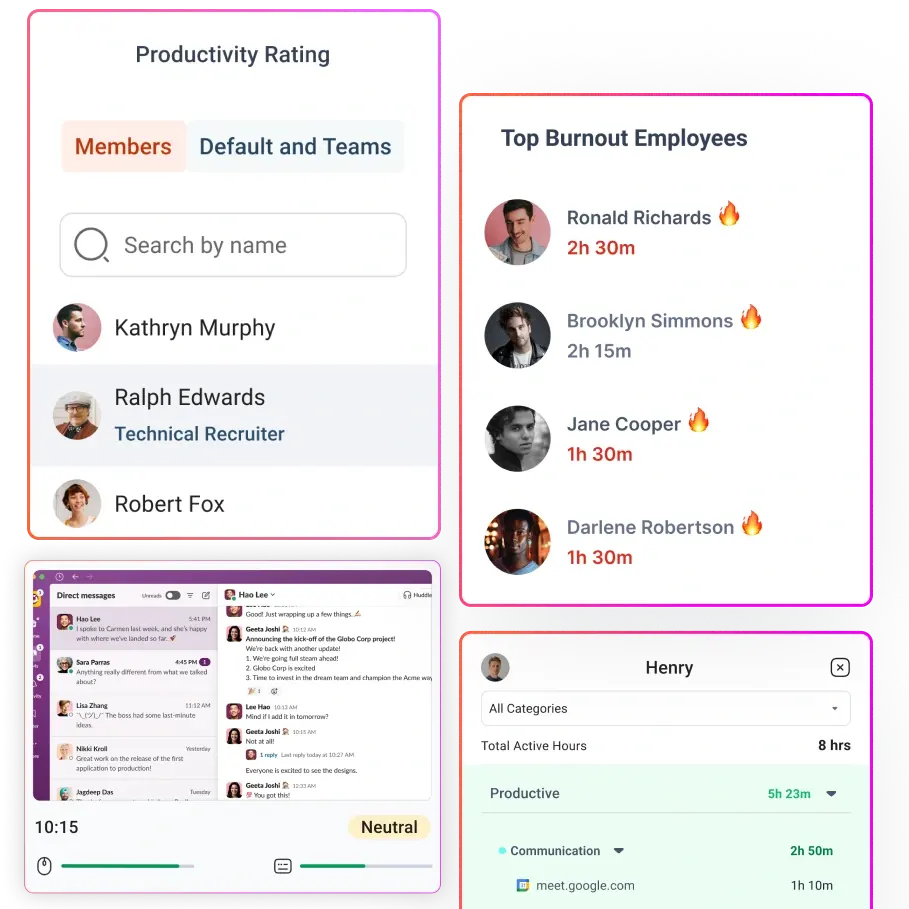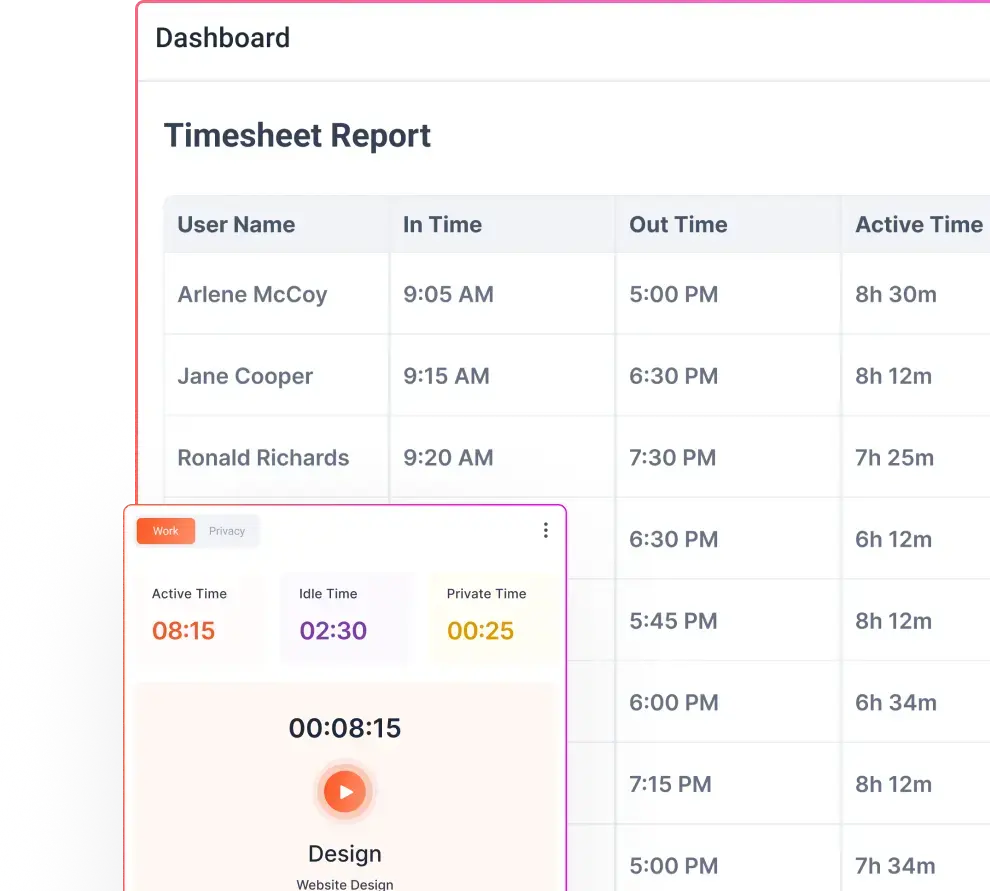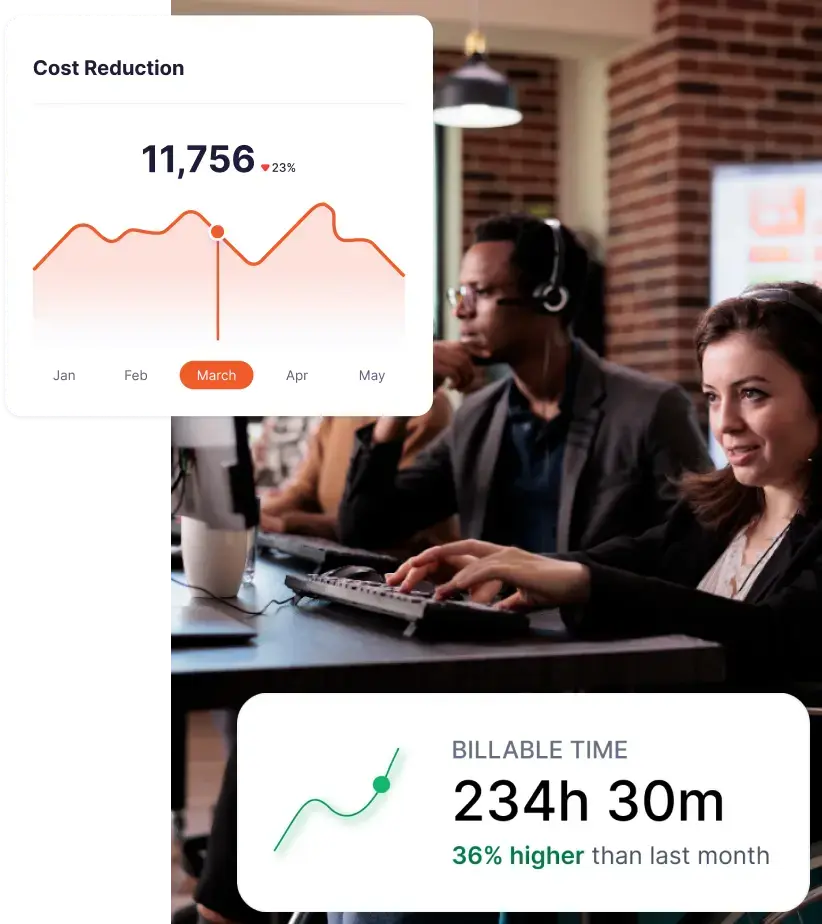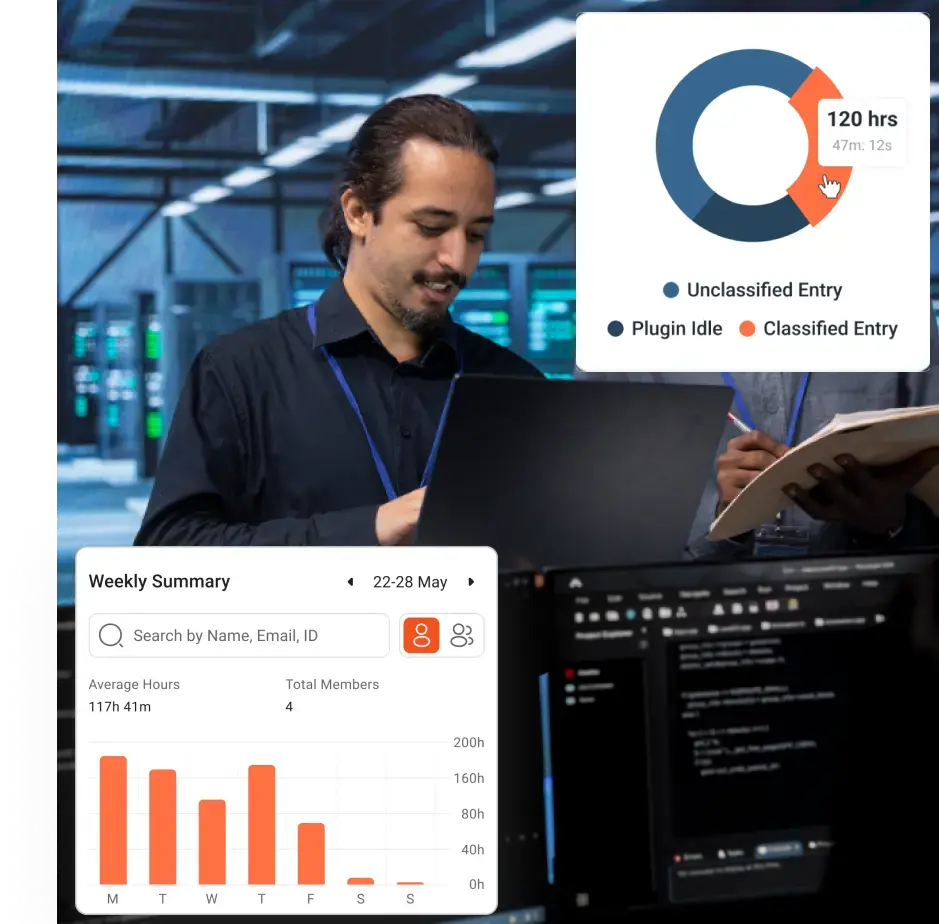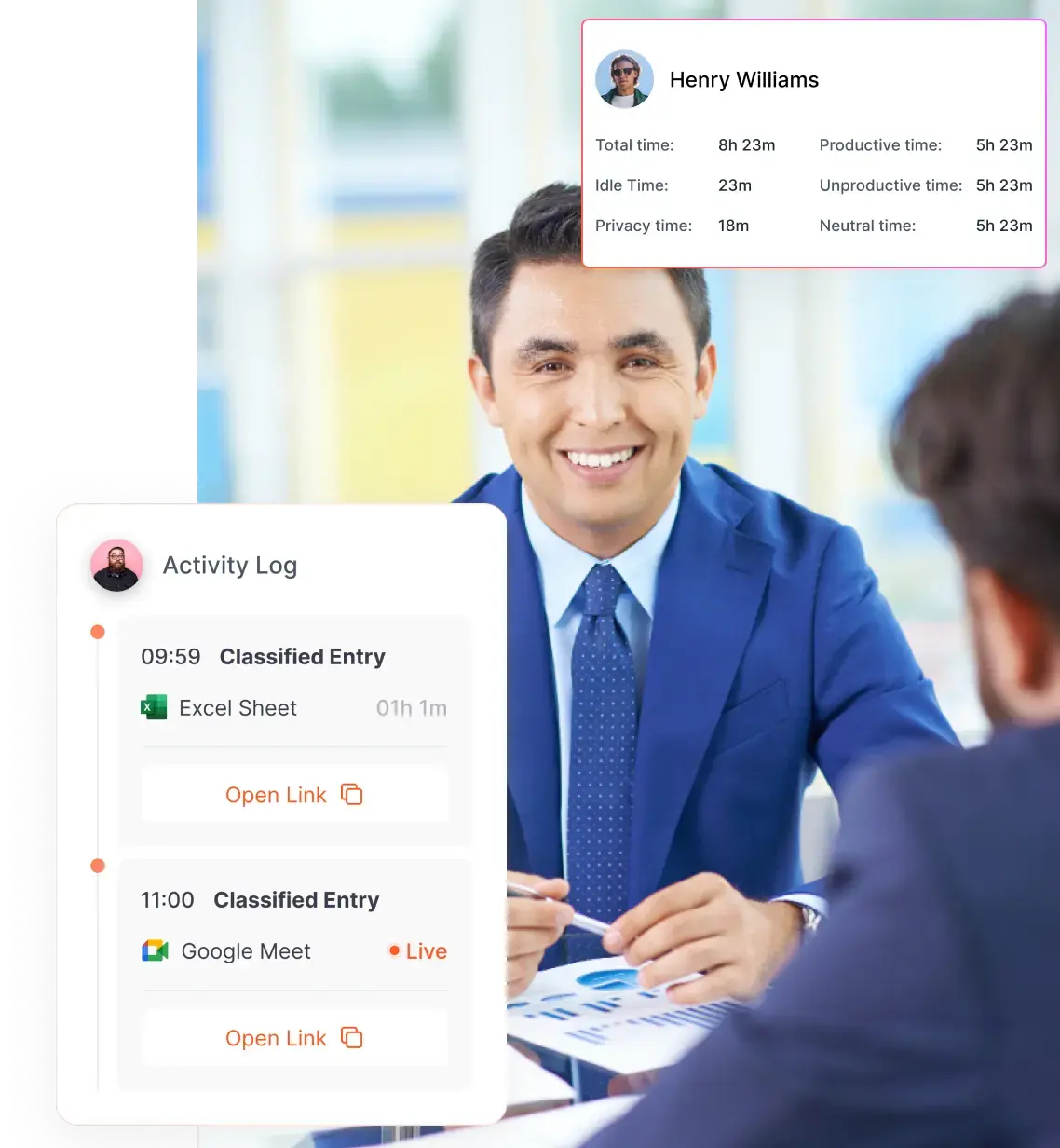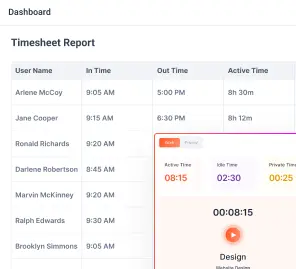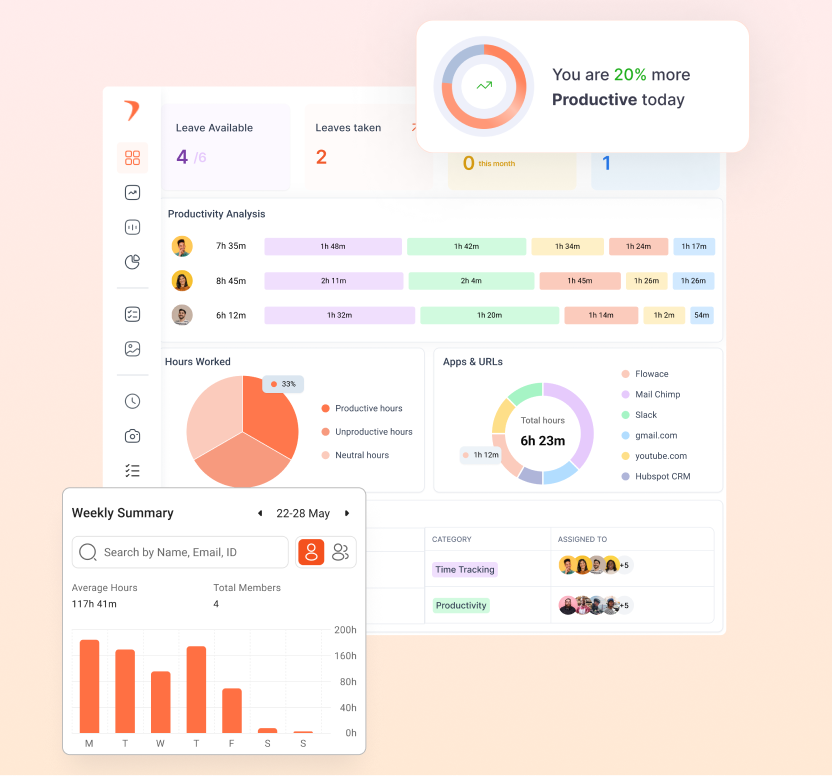Employee performance monitoring is the process of evaluating an employee’s efficiency and productivity at work. Monitoring employees can also be described as a periodic check to determine an employee’s productivity and performance.
This helps organizations meet their established standardized goals and conduct a fair evaluation.
Employee monitoring provides personalized value-added insights on employees. It also helps supervisors make decisions based on real-time data and reinforce measures/steps accordingly. For example, in simple cases where an employee is overworking, it helps the supervisor reduce the workload.
Employee performance monitoring also helps supervisors ensure that employees are progressing over time. Thus, organizations opt for employee monitoring software to measure performance, track productivity, track attention, get insights on project completion, etc.
Employee monitoring software
Monitoring employee performance involves observing, assessing, and evaluating employees’ work-related activities and organizational contributions.
This practice involves using tools like employee monitoring software to gather metrics, generate feedback mechanisms, and track employee performance.
Employee monitoring software helps businesses analyze employee productivity, efficiency, performance, and engagement. With these insights, organizations can increase their business value, grow and succeed.
Companies that aim to enhance their evaluation processes, using online assessment software can provide structured, data-driven tools to assess employee skills and performance effectively.
It provides data on employees’ progress, reducing biases in the evaluation process while maintaining privacy. They can also assess behaviour, track projects and task time, manage billable hours, generate timesheet reports, and get personalized reports.
Some of the key features of employee monitoring software include;
- Employee time-tracking
- Employee attendance monitoring
- Timesheet analysis
- Productivity evaluation
- Project management
- Data reports and analytics
- Integration
| Employee productivity is at risk if:
● There is an ongoing workload imbalance leading to absenteeism ● Poor monitoring of employee performance ● Timesheet inefficiency delaying billings ● Attendance oversight and increasing misconduct ● Resource misallocation |
These issues will no longer be a concern. Monitoring and managing workforce productivity has never been easier than with Flowace.
Benefits of employee performance monitoring
Productivity and Performance
Employee monitoring and productivity tools give leaders a clear picture of how work actually gets done. Instead of relying on assumptions or outdated reports, managers can see which tasks are consuming the most time, where bottlenecks occur, and how teams balance workloads. This visibility makes it easier to celebrate top performers, support struggling employees, and improve overall employee performance and efficiency. For employees, it creates a fairer system — recognition and feedback are based on real data, not just gut feelings. Over time, this leads to higher engagement and stronger team performance.
Identify Skill Gaps
One of the most valuable outcomes of monitoring data is spotting where employees might need extra training. For example, if a team member consistently spends more time than others on a certain type of task, it could highlight a gap in knowledge or confidence. Instead of letting these gaps silently hold back productivity, managers can provide targeted coaching or training programs.
This not only helps individuals grow but also ensures the entire team is operating at its full potential. Companies can then invest in development that truly addresses needs, rather than guessing where to focus.
Accurate Reviews
Performance reviews often suffer from bias or incomplete information, but monitoring tools bring objectivity into the process. With detailed data on project contributions, task completion, and productivity patterns, managers can provide accurate, evidence-backed feedback. Employees benefit too — they can see exactly how their efforts are measured and where they shine.
This makes reviews more transparent, actionable, and motivating, moving away from vague generalizations to clear discussions about performance and growth.
Transparency
A major advantage of using monitoring systems is the level of transparency they create across the workplace. Both managers and employees can access insights into how work is progressing, who’s accountable for what, and whether goals are on track.
This eliminates guesswork and reduces tension about workload distribution analysis. Instead of feeling like they’re being “watched,” employees can view the system as a shared accountability tool that ensures fairness. When implemented openly, transparency builds trust, aligns expectations, and strengthens team collaboration.
Informed Decision-Making
Data-driven insights empower leaders to make smarter decisions about projects, staffing, and resource allocation. Instead of relying on intuition alone, managers can use monitoring data to see which initiatives drive the most value, which employees are ready for more responsibility, and where efficiencies can be improved.
This leads to decisions that are not only faster but also more accurate and impactful. For executives, it means aligning strategy with real-world performance data; for employees, it ensures decisions are made with fairness and clarity.
Enhanced Data Security
Protecting company data has never been more important. Employee monitoring tools help you spot unusual activity early — whether it’s an unauthorized login attempt, suspicious file transfer, or someone plugging in an external USB drive. By catching these red flags, you can stop insider threats and potential breaches before they happen.
Considering that nearly half of businesses report a data breach every year, having this kind of visibility isn’t just helpful — it’s essential for keeping sensitive information safe.
Regulatory Compliance
If you’re in a regulated industry like healthcare, finance, or retail, compliance isn’t negotiable. Monitoring software makes it easier to stay on the right side of the law by automatically recording employee activities, access logs, and file interactions. These digital audit trails mean you’re always prepared for inspections, audits, or legal disputes. Instead of scrambling to pull reports together, you’ll have everything documented — helping you meet requirements like HIPAA, SOX, or PCI-DSS while protecting your organization from fines and reputational risk.
Reduced Time Theft & Costs
Time theft can quietly drain company profits, whether it’s through “buddy punching,” inflated timesheets, or employees spending hours on non-work activities. In fact, it’s estimated that businesses lose $7.4 billion every single day due to wasted time.
Monitoring tools cut this waste by accurately tracking hours, flagging unproductive patterns, and ensuring payroll reflects actual work. Beyond reducing costs, these insights also help leaders allocate resources smartly and keep project budgets under control.
Remote Work Management
Managing a distributed workforce is challenging, and many companies are turning to monitoring tools to keep teams aligned. With features like real-time productivity tracking, task progress dashboards, and automated reports, managers can see what’s getting done without hovering over employees. For businesses, it means accountability and consistent output across locations.
For employees, it creates fairness, everyone’s contributions are visible, whether they’re in the office or working from home. No matter where your team is, you can be confident that work is moving forward.
Industry-Specific Benefits
Different industries face unique challenges, and monitoring software can address them in tailored ways. Here’s how it delivers value across key sectors:
Call Centers
Quality Assurance through Call Monitoring
For call centers, customer experience is everything. Monitoring tools allow supervisors to review call recordings and activity data to ensure agents are following scripts, handling objections properly, and maintaining service quality. This helps standardize best practices across teams and provides concrete examples for training and coaching.
Compliance with Regulatory Requirements
Many call centers operate under strict rules — especially those handling financial or personal data. Monitoring software creates reliable records of interactions, making it easier to demonstrate compliance with industry regulations such as PCI-DSS. In case of disputes, detailed logs serve as legal and operational protection.
Customer Service Improvement
With real-time visibility into agent productivity and call handling, managers can identify top performers and areas needing improvement. Monitoring also helps pinpoint common customer pain points, enabling better training and process refinement. The result? Faster resolutions, happier customers, and improved client retention.
Healthcare
HIPAA Compliance Monitoring
Healthcare organizations must protect patient privacy under HIPAA. Monitoring software helps enforce compliance by tracking who accesses sensitive patient records, when, and for what purpose. Unauthorized attempts can be flagged instantly, reducing the risk of costly violations.
Patient Data Protection
Beyond compliance, patient trust depends on data security. Monitoring systems guard against insider threats by keeping an eye on file transfers, USB activity, and unusual system logins. This ensures medical staff handle electronic health records responsibly, safeguarding both patients and the organization.
Workflow Optimization
Hospitals and clinics often face bottlenecks in administrative tasks like scheduling, billing, or reporting. By analyzing employee activity, monitoring tools highlight inefficiencies and help managers reallocate workloads. This allows staff to spend less time on paperwork and more time on patient care, improving overall outcomes.
Financial Services
SOX Compliance Documentation
Financial institutions are subject to strict requirements, which demand accurate record-keeping and transparency in financial reporting. Employee monitoring software automatically generates audit trails of employee activities, making it easier to pass compliance checks and avoid penalties.
Insider Trading Prevention
Unauthorized data sharing or unusual system activity can indicate insider trading risks. Monitoring tools detect anomalies in communication or access patterns, allowing compliance teams to investigate early. This proactive layer of oversight helps protect the firm’s integrity and reputation.
Risk Management
From fraud attempts to regulatory breaches, the financial sector faces constant threats. Monitoring provides real-time visibility into employee actions, enabling faster response when risks arise. By combining activity data with analytics, firms can spot vulnerabilities before they escalate into serious financial or legal problems.
Drawbacks of Employee Performance Monitoring
1. Cost of Implementation and Ongoing Maintenance
Monitoring software isn’t just a one-time purchase. Beyond licensing fees, businesses often face hidden costs such as onboarding, training, integration with existing tools, and system updates. For large teams, costs can scale quickly, especially with premium features like advanced analytics or AI-driven insights. Add to that the need for dedicated IT support and occasional troubleshooting, and the investment may feel heavier than expected. Small and mid-sized businesses, in particular, must ensure the return on investment justifies the upfront and ongoing expenses.
2. Potential for Creating a Toxic Work Culture if Poorly Implemented
The line between accountability and surveillance is thin. If monitoring tools are introduced without transparency or employee buy-in, staff may feel spied on, leading to distrust, anxiety, or resentment. Instead of driving productivity, this can fuel a toxic work culture where employees focus on “appearing busy” rather than doing meaningful work. In extreme cases, it may increase turnover as workers seek out environments that prioritize trust and autonomy. The way monitoring is communicated and rolled out matters as much as the technology itself.
3. Technical Challenges and Learning Curve
Like any digital solution, monitoring tools come with a learning curve. IT teams need time to set up dashboards, customize workflows, and integrate the software with existing systems. Managers must learn to interpret data correctly, while employees may need training to understand what’s being tracked and how it benefits them. If the system is overly complex or poorly supported, it risks becoming a burden instead of an asset. Technical hiccups — like inaccurate tracking, data syncing issues, or compatibility gaps — can further frustrate users and reduce adoption.
4. Resistance from Employee Unions
In unionized environments, monitoring software can become a flashpoint for conflict. Many unions view surveillance as a potential threat to worker rights, privacy, and autonomy. Introducing such systems without prior consultation can trigger grievances, negotiations, or even legal challenges. Employers may face pushback not only on whether monitoring is allowed, but also on how data is stored, who has access to it, and how it’s used in performance evaluations. This makes collaboration with unions and employee representatives critical before rolling out any monitoring initiatives.
5. Risk of Focusing on Quantity Over Quality Metrics
Monitoring software often emphasizes measurable outputs like hours logged, keystrokes, or application usage. While these metrics can provide valuable insights, they don’t always reflect the quality or creativity of the work being done. If managers rely too heavily on raw numbers, employees may prioritize speed over depth, output over innovation, and compliance over problem-solving. This can undermine long-term value, especially in roles that demand strategic thinking, creativity, or client interaction — areas where results can’t always be captured by a time tracker.
6. Potential for Decreased Creativity and Innovation
Constant monitoring can make employees feel they’re under a microscope, and feel like micromanagement, which can stifle experimentation and risk-taking. Innovation often requires time for brainstorming, trial and error, and unstructured thinking — activities that may look “unproductive” on a timesheet. If workers feel pressured to justify every minute, they may shy away from creative approaches or complex problem-solving. Over time, this could reduce the organization’s ability to innovate and adapt, leaving it at a disadvantage in dynamic markets.
Best Practices for Implementation
Introducing employee monitoring software isn’t just a technical decision — it’s a cultural one. The way you roll it out determines whether it becomes a productivity booster or a source of tension. Here are some best practices to ensure a smooth and effective implementation:
1. Start with Clear Communication and Employee Buy-In
Transparency is key. Before rolling out monitoring tools, explain the “why” behind the decision. Employees need to know that the purpose is to improve workflows, ensure fairness, and protect sensitive data — not to micromanage every click. Invite feedback, answer concerns, and involve staff in shaping policies. When employees feel included rather than blindsided, they’re far more likely to accept the change positively.
2. Begin with Pilot Programs Before Full Deployment
Instead of launching company-wide overnight, start with a pilot program in one department or team. This allows you to test functionality, identify gaps, and gather honest feedback. Pilots also help you fine-tune settings — such as what’s tracked and how data is reported — before scaling. By proving value in smaller groups first, you create champions inside the organization who can advocate for broader adoption.
3. Focus on Productivity Improvement, Not Punishment
The goal should be to help employees work smarter, not to “catch” them making mistakes. Frame monitoring as a tool for identifying workflow inefficiencies, removing obstacles, and ensuring fair recognition. When positioned this way, employees view monitoring as supportive rather than punitive. Avoid using the data solely for disciplinary action, as this quickly erodes trust and undermines the purpose of the system.
4. Provide Training on Monitoring Tools and Processes
Even the most advanced system won’t succeed if employees and managers don’t know how to use it. Offer structured training sessions to explain not only the mechanics of the software but also how the data will be interpreted. For managers, this means learning to analyze reports responsibly; for employees, it’s about understanding what’s being tracked and why. Training reduces misunderstandings and ensures everyone uses the system to its full potential.
5. Regular Review and Adjustment of Monitoring Policies
Workplaces evolve, and so should your monitoring practices. Schedule regular reviews — quarterly or biannually — to evaluate whether the system is delivering the intended benefits. Are productivity levels improving? Are employees still comfortable with the level of tracking? Are policies aligned with legal requirements? By revisiting policies regularly, you avoid stagnation and can make adjustments before small issues turn into bigger cultural problems.
6. Balance Automation with Human Oversight
Monitoring tools can automate data collection, but context matters. A sudden dip in activity levels might signal disengagement, or it could simply mean an employee is in a brainstorming session away from their computer. Relying solely on numbers risks misinterpretation. That’s why it’s crucial to pair automated insights with human judgment. Managers should use the data as a conversation starter, not a final verdict. This balance ensures monitoring drives improvement without losing empathy.
Proven Techniques: Employee performance monitoring
Organizations need to create a performance monitoring program that efficiently identifies and resolves issues and contributes to the continuous enhancement of system operations.
Here are a few practices that will help you become good to great;
Develop Custom Metrics
Tailor your performance metrics to align with your organization’s goals and operational requirements. Custom metrics reflect system performance more accurately and can pinpoint improvement areas.
- Determine which metrics are most relevant to your business objectives. For instance, if you’re a Magento E-commerce business, you might focus on transaction speed and checkout process efficiency.
- Use industry benchmarks to set realistic performance goals and understand where you stand compared to your competitors.
- Your metrics should evolve with your business.
Proactive Alert
Establish a proactive alerting mechanism that triggers notifications based on predefined thresholds. This approach allows for early detection and resolution of potential issues, preventing them from escalating into more significant problems.
- Analyze past performance to set meaningful thresholds that indicate when action is needed.
- Ensure alerts are tied to an incident management system for quick response and resolution.
- Customize alert messages to provide immediate context, which can significantly reduce resolution times.
Foster Continuity
Create a culture of continuous improvement by regularly reviewing performance data and learning from past incidents. Use this information to refine your monitoring strategies and enhance overall system performance.
- Implement feedback loops that continuously refine monitoring strategies based on past incidents and performance data.
- Invest in training programs to update your team on the latest monitoring tools and best practices.
- Use predictive analytics to anticipate performance issues before they occur, allowing for preemptive action.
Wind-Up
Employee performance monitoring isn’t a binary decision of on or off. It’s about balancing data-driven insights and fostering a culture of trust.
Effective performance monitoring should be a springboard for continuous improvement, not a source of micromanagement.
The right monitoring tool will bring transparency and open communication, empower employees, help supervisors identify growth areas, and cultivate a culture of continuous improvement.
When you use it strategically, you can develop employees and create a win-win situation. Instead of a top-down micromanagement tool, envision it as a data-driven tool for monitoring employees for overall development.
Use Flowace today to get started on employee performance monitoring and elevate your workforce’s productivity.
Related Articles
- Employee Monitoring: Complete Guide 2025
- How to Choose Employee Monitoring Software
- 9 Ways Employees Fool Monitoring Software
- Employee Monitoring Data Protection Guide
- Employee Monitoring Myths Debunked
- Employee Wellbeing Monitoring Solutions
- Create Ethical Employee Monitoring Policy
- What is Employee Task Tracking? Complete Guide
- Best Employee Monitoring Software 2025
- Employee Idle Time Tracking Software Guide
- Employee Monitoring Best Practices 2025
- Employee Monitoring Laws: Legal Guide 2025
- How Employee Monitoring Software Works & Matters
- Remote Team Monitoring: Perspectives & Insights
- Employee Monitoring Statistics 2025

























